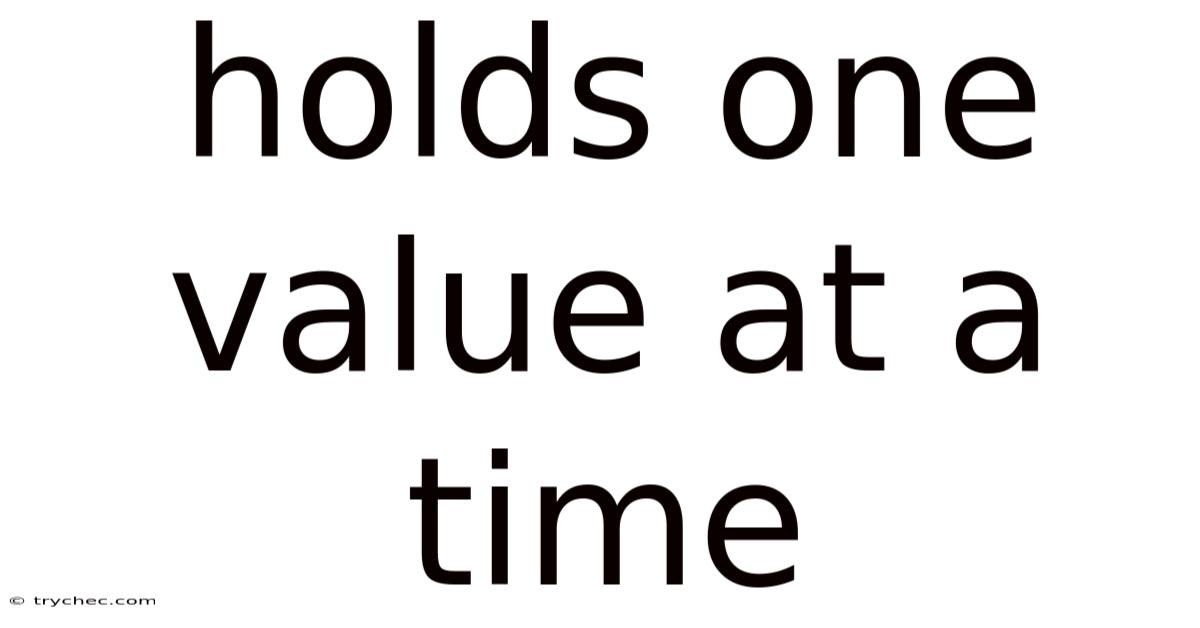Holds One Value At A Time
trychec
Nov 14, 2025 · 10 min read

Table of Contents
Understanding Variables: Holding One Value at a Time
In the realm of programming, a variable serves as a fundamental building block, acting as a designated storage location within a computer's memory. Its primary function is to hold one value at a time, a concept central to how we manipulate and process data within programs. This single value can represent a myriad of information, ranging from simple numbers and text to more complex data structures.
The Essence of a Variable
Imagine a labeled box. This box is our variable. We can put something inside this box – a number, a word, or even a more complicated object. The label on the box is the name of the variable, and what’s inside is the value. The key concept here is that this box can only hold one thing at a time. If we put something new in the box, the old content is replaced. This characteristic, "holds one value at a time," is fundamental to understanding how variables work and how they are used in programming.
Variables are essential because they allow us to:
- Store data: Temporary storage of information needed by the program.
- Manipulate data: Perform operations (calculations, modifications) on the stored values.
- Reference data: Access and reuse the stored values throughout the program.
Anatomy of a Variable
Before we delve into the specifics of how variables operate, let's examine the key components that define them:
- Name (Identifier): A unique label assigned to the variable, allowing us to refer to it within the code. Variable names should be descriptive and follow specific naming conventions of the programming language being used. For example,
age,firstName, ortotal_amountare common variable names. - Data Type: Specifies the kind of value the variable can hold. Common data types include:
- Integer (int): Whole numbers (e.g., 10, -5, 0).
- Floating-point number (float): Numbers with decimal points (e.g., 3.14, -2.5).
- Character (char): Single characters (e.g., 'A', '7', '
Latest Posts
Latest Posts
-
What Does Gatsby Want Daisy To Do
Nov 14, 2025
-
Where Should You Look To Follow Your Intended Path
Nov 14, 2025
-
El Templo Esta Encima De La Piramide Azteca
Nov 14, 2025
-
Cats And Dogs Reading Passage Teas Test
Nov 14, 2025
-
What Theme Is Supported By The Excerpt
Nov 14, 2025
Related Post
Thank you for visiting our website which covers about Holds One Value At A Time . We hope the information provided has been useful to you. Feel free to contact us if you have any questions or need further assistance. See you next time and don't miss to bookmark.